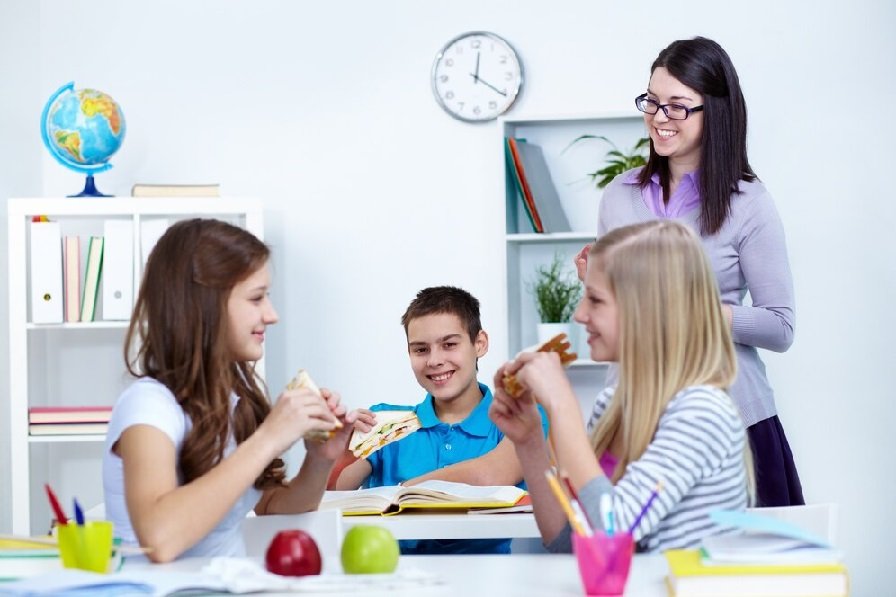How to Address a Wide Range of Skills and Abilities in Your Classroom

how would you address a wide range of skills and abilities in your classroom?
Intro: how would you address a wide range of skills and abilities in your classroom?
In today’s diverse educational environment, addressing a wide range of skills and abilities is essential for fostering an inclusive and effective learning space. Teachers face the challenge of meeting the individual needs of each student while maintaining a cohesive classroom dynamic. This article delves into comprehensive strategies for accommodating diverse learners, ensuring that every student has the opportunity to thrive how would you address a wide range of skills and abilities in your classroom?.
Understanding Student Diversity
Before implementing strategies, it’s crucial to understand the different types of diversity that may exist in your classroom. Students vary in academic abilities, learning styles, cultural backgrounds, languages, and socio-emotional needs. Recognizing these differences is the first step toward creating an inclusive classroom.
Academic Abilities
Students come with varying levels of academic proficiency. Some may excel in specific subjects, while others might struggle. Identifying these variations early allows for targeted interventions.
Learning Styles
Learners have distinct preferences for acquiring information. The main learning styles include visual, auditory, kinesthetic, and reading/writing. Tailoring your teaching methods to accommodate these styles can enhance student engagement and retention.
Cultural Backgrounds
Cultural diversity enriches the classroom environment. Being culturally responsive helps in building strong relationships and ensuring that all students feel valued and respected how would you address a wide range of skills and abilities in your classroom?.
Languages
Multilingual classrooms are increasingly common. Supporting English Language Learners (ELLs) and encouraging multilingualism can boost cognitive abilities and cultural awareness.
Socio-Emotional Needs
Students’ emotional and social development significantly impacts their academic success. Addressing mental health issues, social skills, and emotional well-being is essential for a holistic approach to education.
Differentiated Instruction
Differentiated instruction is a teaching approach that involves tailoring instructional strategies to meet the diverse needs of students. This method allows teachers to provide varied learning experiences that cater to individual strengths and weaknesses.
Flexible Grouping
Grouping students based on their abilities, interests, or learning styles can facilitate more personalized instruction. These groups should be dynamic, changing as students progress how would you address a wide range of skills and abilities in your classroom?.
Tiered Assignments
Assignments can be designed with varying levels of difficulty. Tiered assignments ensure that all students are working at an appropriate challenge level, promoting growth without causing frustration how would you address a wide range of skills and abilities in your classroom?.
Choice Boards
Choice boards offer students a range of activities to choose from, allowing them to engage with the material in a way that suits their learning preferences. This strategy fosters autonomy and motivation.
Learning Centers
Creating different learning centers within the classroom can provide students with opportunities to explore topics through various modalities. Centers might include reading corners, technology stations, or hands-on activity areas how would you address a wide range of skills and abilities in your classroom?.
Incorporating Technology
Technology can be a powerful tool for addressing diverse learning needs. Educational technology offers a range of resources that can be customized to support individual learning goals.
Adaptive Learning Software
Adaptive learning programs adjust the difficulty of tasks based on student performance. This ensures that students are continually challenged at their appropriate level, facilitating personalized learning pathways how would you address a wide range of skills and abilities in your classroom?.
Digital Collaboration Tools
Tools such as Google Classroom, Microsoft Teams, and other collaborative platforms allow students to work together regardless of physical location. These tools support peer learning and collaborative projects.
Interactive Simulations and Games
Educational games and simulations can make learning engaging and interactive. These tools cater to different learning styles and can be particularly beneficial for kinesthetic and visual learners.
Assessment and Feedback
Effective assessment and feedback are critical components of a differentiated classroom. These practices help in monitoring progress and identifying areas that need further support.
Formative Assessments
Ongoing assessments, such as quizzes, polls, and informal observations, provide immediate feedback. Formative assessments help teachers adjust their instruction based on student needs how would you address a wide range of skills and abilities in your classroom?.
Summative Assessments
End-of-unit tests, projects, and standardized exams offer insights into student comprehension and achievement. These assessments should be varied to capture the diverse strengths of students how would you address a wide range of skills and abilities in your classroom?.
Personalized Feedback
Providing individualized feedback helps students understand their strengths and areas for improvement. Constructive feedback fosters a growth mindset and encourages continuous learning.
Fostering an Inclusive Environment
An inclusive classroom environment is one where all students feel safe, respected, and valued. This requires intentional efforts to build a positive classroom culture how would you address a wide range of skills and abilities in your classroom?.
Cultural Sensitivity
Incorporating students’ cultural backgrounds into the curriculum and classroom activities promotes inclusivity. Celebrating diverse cultures enhances students’ sense of belonging and mutual respect how would you address a wide range of skills and abilities in your classroom?.
Social-Emotional Learning (SEL)
Integrating SEL into the curriculum helps students develop emotional intelligence, resilience, and interpersonal skills. Activities such as group discussions, role-playing, and mindfulness exercises support SEL.
Peer Support and Mentoring
Encouraging peer support and mentoring systems within the classroom helps students learn from each other. These relationships can boost confidence and foster a collaborative learning environment.
Professional Development for Teachers
Ongoing professional development is crucial for teachers to effectively address the diverse needs of their students how would you address a wide range of skills and abilities in your classroom?. Engaging in continuous learning opportunities helps teachers stay updated with the latest educational strategies and tools.
Workshops and Seminars
Participating in workshops and seminars on differentiated instruction, cultural competence, and educational technology equips teachers with practical skills and knowledge.
Collaborative Planning
Working with colleagues to plan and share best practices promotes a collaborative professional culture. Teachers can benefit from each other’s experiences and insights how would you address a wide range of skills and abilities in your classroom?
Reflective Practice
Regular self-reflection helps teachers evaluate their teaching methods and make necessary adjustments. Reflective practice encourages continuous improvement and professional growth.
Engaging Families and Communities
Involving families and communities in the educational process enhances student support and success. Building strong home-school connections fosters a supportive learning environment.
Communication
Maintaining open and regular communication with families about student progress and classroom activities encourages collaboration and support.
Family Engagement Activities
Hosting events such as parent-teacher conferences, cultural nights, and workshops can strengthen family involvement and understanding of the educational process.
Community Partnerships
Partnering with community organizations provides additional resources and opportunities for students. Community involvement can enrich the curriculum and provide real-world learning experiences.
Addressing a wide range of skills and abilities in the classroom requires a multifaceted approach that combines differentiated instruction, technology integration, inclusive practices, and continuous professional development. By adopting these strategies, teachers can create a dynamic and supportive learning environment that meets the needs of all students how would you address a wide range of skills and abilities in your classroom?.






